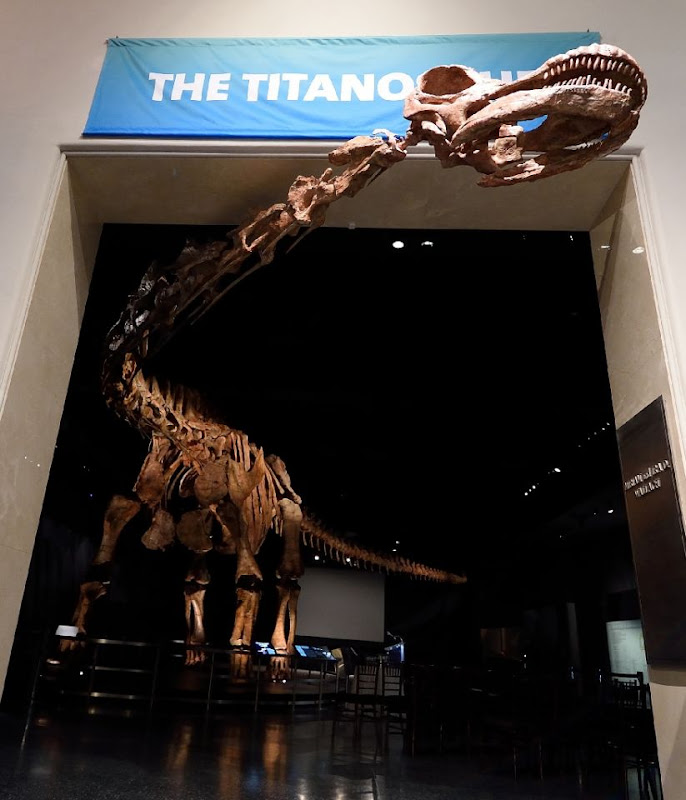A cast and fossils from a brand new species of titanosaur, one of the largest dinosaurs ever discovered, went on display on Thursday in New York for the first time.

The remains of the giant herbivore, which would have lived 100 million years ago, were excavated in the desert near La Flecha, 135 miles (216 kilometers) west of Trelew, by the Argentinian team.
The colossal exhibit unveiled at the American Museum of Natural History is 122 feet (37.2 meters) long. It is so enormous that its head and neck extend out of the room into a lobby near the elevators.
The animal was a young adult of unknown sex, that would have weighed 70 tons or as much as 10 African elephants, the museum said.
Paleontologist Diego Pol, who helped lead the excavations, told AFP that the discovery was a "once in a lifetime" moment.
"It's very exciting when you're uncovering sediment that buried an animal 100 million years ago and you're the first person taking this femur out and bringing it for the first time back to the surface," he said.

"It's a rather unique feeling and it's really exciting. So that was a great moment. The big surprise came a few weeks after very hard work when we realized there were so many other bones there as well."
In total 223 fossil bones from six of the creatures were discovered at the site, all young adults who died at different times from a few years to centuries apart.
The species lived in the forests of modern-day Patagonia 100 to 95 million years ago, during the Late Cretaceous period.
Experts say that young herding animals can become isolated from their group and die of stress and hunger, often near water resources.
One femur found at the site is among five original fossils on temporary view with the titanosaur model in New York, before they go back to the museum in Argentina.
Experts say it is one of the largest dinosaurs ever discovered.

The real fossils would have been far too heavy to mount, so the life-size model is made up of 3D prints made of fiberglass of the bones.
With its neck elevated, the titanosaur would have been tall enough to peer into the window of a five-story building, the museum said.
"It is the first time we have a fairly complete skeleton of the giant titanosaurus," Pol told AFP. Before, experts had just a few bones.
"So we couldn't understand completely how these animals were moving around, how fast they were growing, all sorts of questions that relate to trying to understand these fantastic animals," Pol said.
His team worked 18 months on seven different expeditions to get all the fossils from the excavation site to their museum in Argentina.

They even had to build a road in the remote region to allow trucks and machinery to transport all the bones back to the museum, he added.
Mark Norell, chair of paleontology at the American Museum of Natural History, said titanosaurus lived on every continent, and predicted more discoveries, particularly in relatively unexplored parts of Patagonia and Central Asia.
The story of the dramatic discovery and the new animal has been made into a BBC documentary, to be broadcast in Britain on January 24 and in the United States on PBS on February 17.
Author: Jennie Matthew | Source: AFP [January 15, 2016]